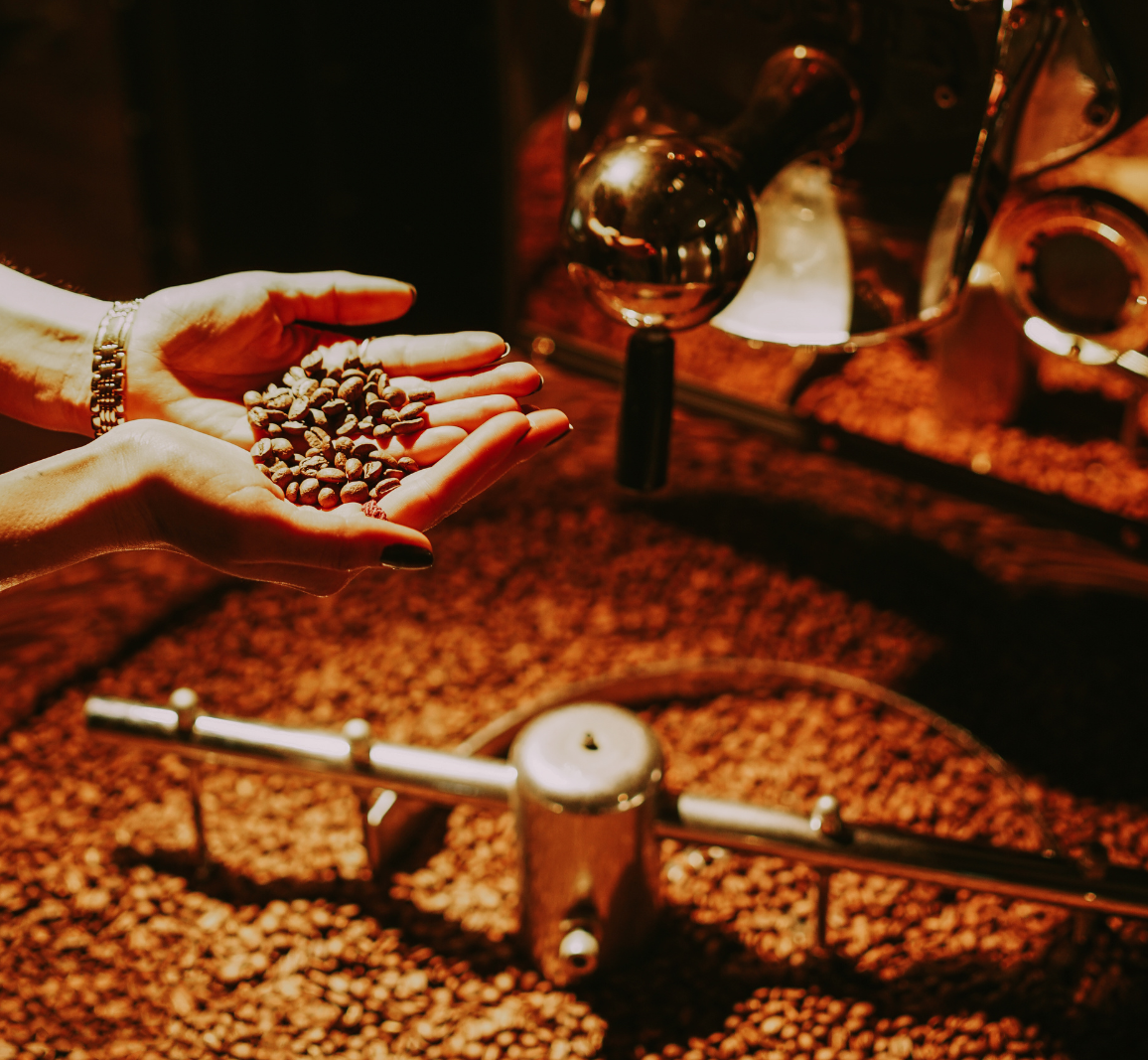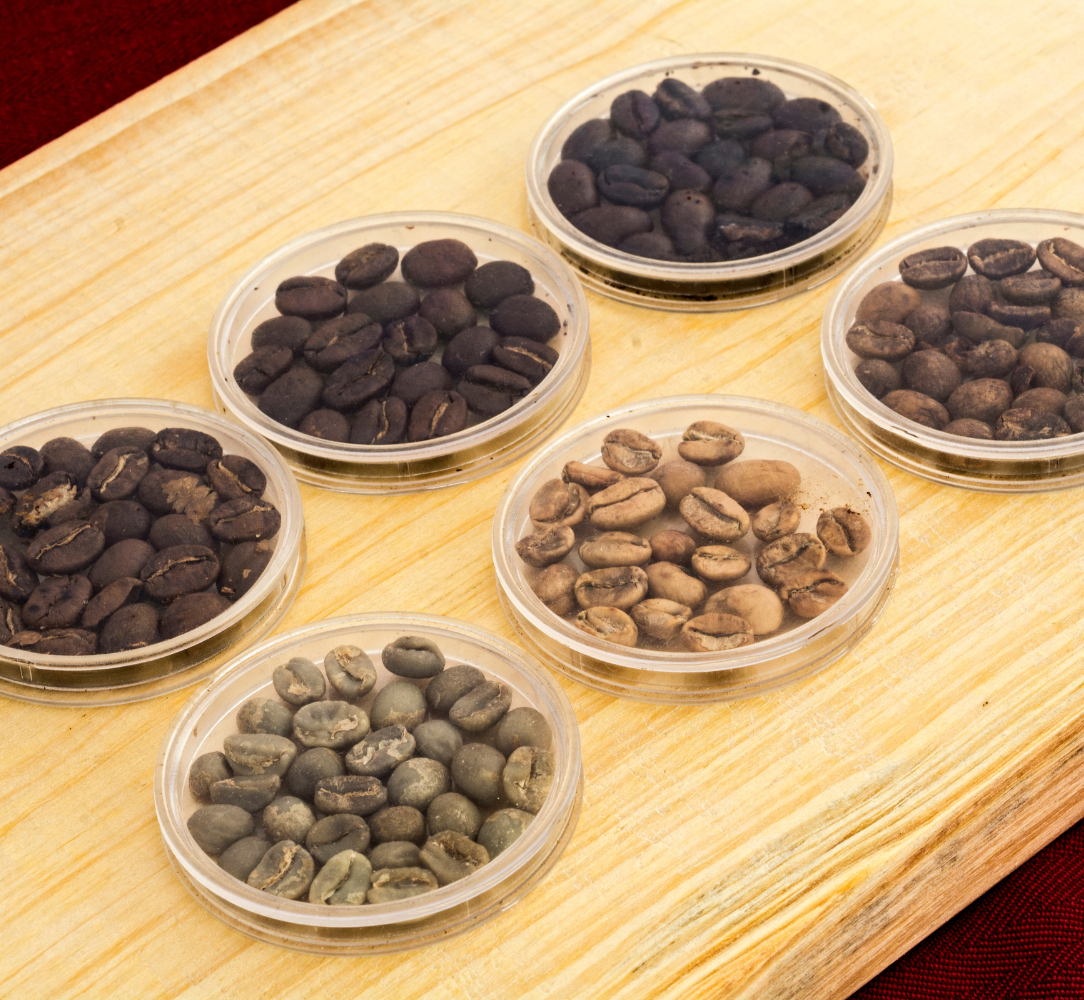What happens in the coffee roasting process?
The aroma of freshly roasted coffee beans is one of the most mouth-watering on the planet, and research has shown that medium to dark roast coffee beans can elicit more of a positive response from coffee-drinkers than light roasts.
But what really happens when coffee beans are roasted? Let’s take a look at this important process for making the best coffee, and what’s going on inside the bean during roasting.
What does roasting do to coffee beans?
While most people think of coffee beans as dark brown, the unroasted beans are actually bright green, with an earthy flavour and a tightly sealed cleft.
During roasting, the water inside the bean reaches boiling point and turns into steam. The internal pressure from the steam softens the bean’s outer casing and eventually cracks the bean – something you can hear happen during the roasting process.

How does roasting change flavour?
The point at which you stop roasting a bean determines its flavour, which we generally divide into four basic categories:
Light; the bean is light brown with a dry surface and a light, fruity smell.
Medium; the bean is medium brown with slight oil on the surface and a balanced flavour.
Medium-dark; the bean is dark brown with an oilier surface and a bittersweet aftertaste.
Dark; the bean is black with an oily surface and a significant bitterness.
Each of these categories is divided further when describing the nuanced flavour changes that occur throughout the roasting process.
For instance, a ‘Cinnamon Roast’ refers to light-roast beans that have been roasted just long enough to be palatable, but which still retain a slight grassy taste.
At the other end of the spectrum, we use ‘Vienna Roast’ to mean beans that are just entering the dark roast phase, and ‘Italian Roast’ to mean the blackest beans at the end of the process.
The different flavours of the beans themselves will be more noticeable at the early stages of this process. If two beans of different origins are roasted to the dark phase, their taste will be largely the same.
Personal preference determines which type of blend you like best, just like deciding how well done you like your steak or how dark you prefer toasted bread.
What's the best coffee roast?
A study published in the journal Foods at the start of 2022 found that medium-dark roast coffee beans produce coffee that’s more pleasurable for most people to drink.
The authors explained: “Roasting is one of the important factors that affects the sensory properties of coffee. During the roasting process, coffee beans are exposed to a high temperature, and sugars in the beans undergo a caramelisation reaction.
“Once the beans are heated to 205 Celsius, thermal decompositions and chemical changes occur, resulting in development and degradation of various volatile compounds, such as carbon dioxide, aldehydes, ketones, ethers, acetic acid, methanol, oils, and glycerol.”
Because of this chemical process, it’s possible to adjust the temperature of roasting, along with certain other conditions, in order to affect the complexity of the resulting coffee’s flavour and aroma.

How does roasting coffee affect caffeine?
Some people think dark-roasting coffee intensifies the caffeine, while others think the roasting process ‘burns off’ caffeine, leaving you with a semi-decaffeinated bean. So who’s right?
The answer is neither; both are misconceptions. Overall, regardless of roasting, there is very little difference between the caffeine levels of different coffee beans of the same variety.
A paper presented at the Institute of Physics 2nd International Conference on Sustainable Plantation in September 2021 confirmed this.
In their study, the researchers wrote: “Roasting is a critical process to develop a good flavour and cup quality of the coffee brew. Bioactive compounds of coffee, such as chlorogenic acids, caffeine and trigonelline, affect brewed coffee’s cup quality.
“Chlorogenic acid and trigonelline significantly decrease during the roasting process. However, caffeine is quite stable during roasting.”
Find out more
For more coffee tips and guides, follow Mulmar on Instagram. There you'll find more visual quick references, top tips for baristas and interesting facts about coffee and how to brew the perfect cup – whether you like your coffee roasted dark, medium or light.